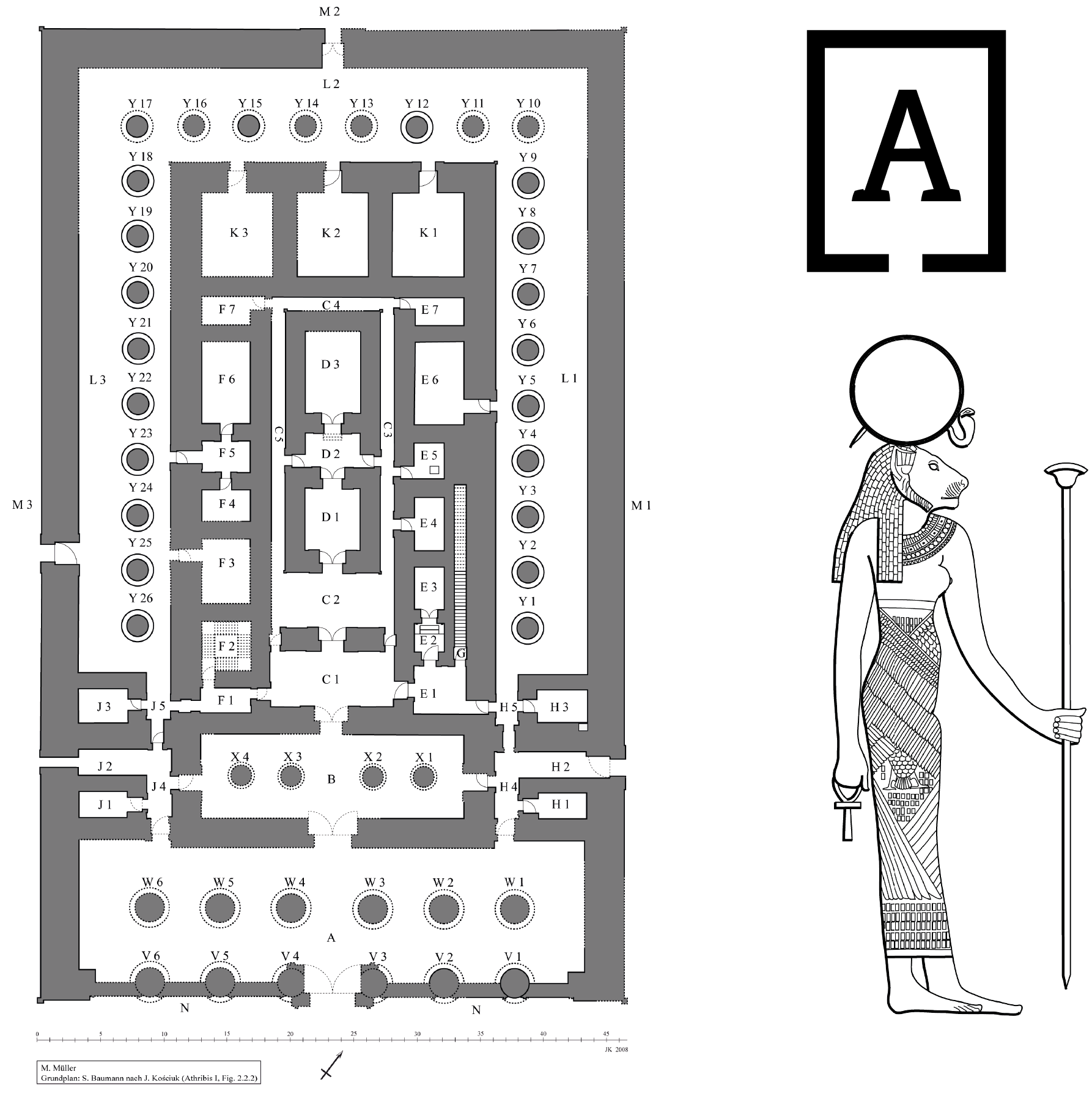Station 1
Welcome table
In comparison to many other Egyptian sites, Athribis was founded relatively late (c. 4th c. B.C.). West of the still covered settlement with mudbrick houses there is also the mountain with Ptolemaic and Roman tombs (until 4th c. A.D.). Above the tombs are the limestone quarries that are the source of the temple stones.
From the east, a processional alley leads to the gate of Ptolemaios’ IX (116-107, 88-80 B. C.) which defines the entrance to the temple precinct. An unexcavated temple in front of the mountain belongs to this gate, but only a corner of this temple’s gate (pylon) is visible. A second stone walkway, perpendicular to the gate of Ptolemaios’ IX, leads to the temple of Ptolemaios’ XII (80-58, 55-51 B. C.), the decoration of which was completed by Roman emperors, mainly Tiberius (14-37 A. D.), Caligula (37-41 A. D.), and Claudius (41-54 A. D.).
The first archaeological excavations were conducted by W. Flinders Petrie (six weeks in winter 1907/08), then by the Egyptian Antiquities Organisation (1981-97) led by Rifaat el-Farag, Yahya El-Masry with field director Mohamed Abdul-Aziz, and since 2003 by the project of the Eberhard-Karls Universität Tübingen lead by Christian Leitz with field directors Rafed el-Sayed (until 2011) and Marcus Müller (since 2012), supported by the Ministry of Antiquities.